LIVINGSTON, Guatemala – I knew I had finally found the place when I heard the music. Completely unlike the punta drums and reggae blaring from the bars and restaurants a few blocks away, a dramatic instrumental selection drifted through the dusty streets. A crowd had begun to gather around the place they call The Minerva – a small building undistinguishable to my eye from any of the others, except that the door was covered with a white sheet and palm fronds, and guarded by a young boy with a spear in a red robe, white kneesocks and sandals and a red cowboy hat, pinched up into a pointy crest.
Semana Santa, or Holy Week, is a grand affair throughout Latin America, with spectacular processions and dramatic reenactments of the Easter story taking over the streets and lasting for days. Here in Livingston, the event is traditionally organized by the Garifuna community, and carried out with an unusual African-Caribbean flair.

The Garifunas are a cultural group that originated with the 1665 shipwreck of a slave ship off the coast of the Caribbean island of St. Vincent. The escaped slaves intermarried with the island natives, and their descendents populated the Caribbean coast of Central America, where they have developed a distinctive culture with their own language, traditions and music. Livingston is home to Guatemala’s most important Garifuna community.
Back at the Minerva, the crowd began to form along the street: Garifuna elders, ladies in church dresses and hair wraps, young women decked out in bosomy halters and heels, dreadlocked men and cleancut ones, Maya women in their long skirts and blouses. A drunken villager stumbled to the street and began an aggrieved address to no one in particular.
“I’m hungry and I’m thirsty, and nobody helps me!” he slurred. “What good is your Catholic …” he stumbled and began again. The crowd milled and ignored him, and eventually he took his leave.
“Where are you from?” a little voice piped up. I looked down and saw a girl of about 10. “United States,” I told her. “Oh!” her eyes brightened hopefully. “Do you know somebody named Maris?”
“No, I don’t think so,” I answered. “Who is she?”
“That’s my mother,” she said. Rosita was her name, and she lived with her aunt while her mother held down a job somewhere in the United States – Rosita didn’t know where – and sent money home. She hadn’t seen her mother in three years. I felt a lump in my throat.
Rosita was disappointed, but only momentarily. Something was happening over by the palm fronds. Four red-robed young black men brandishing spears appeared from nowhere and dashed through the crowd down the street. These were the Roman soldiers, I was to understand, and it was these colorfully costumed fellows who later led the black Jesus through the streets, taunting and harassing him.
But first, a phalanx of them bearing flaming torches pushed him to the front of the crowd: White-robed, long-haired and of noble bearing, he proclaimed his divine role as the soldiers mocked him. Hands tied, he was marched through the streets of Livingston, alternately hanging his head in resignation and casting tragic gazes to the sky as the soldiers pushed and taunted.
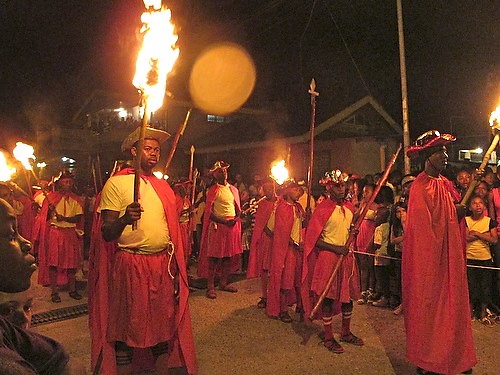
The crowd continued to grow, lining the streets and falling into step behind the procession as it made its way to the main street, where Bob Marley and the Rolling Stones still blared. “Respeto!” shouted a woman wearing an Obama hat. I asked to take her picture, and she told me Obama Livingston’s president, too. The procession pressed on into the crowd and the bars fell silent. Tourists and vendors alike fell silent; some reached for their cameras, while others just gaped. All stepped back to make way for the suffering Jesus and his tormentors.
Several of the faithful told me this would be going on into the wee hours of the morning. I called it quits at midnight, and they were still going strong.
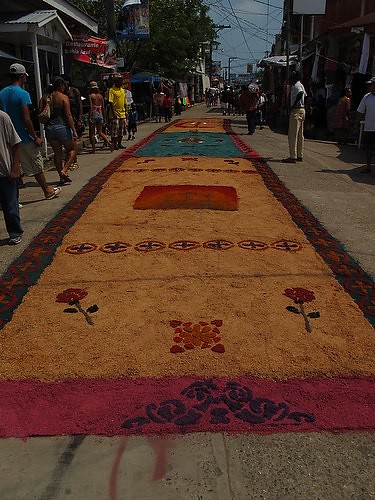
In the morning, I found the main street decorated with elaborate “alfombras,” brilliantly colored sawdust carpets depicting flowers and doves, crosses and Bible verses. Back at the Minerva, little black angels in cornrow braids sported white dresses and cardboard feather-covered wings; the boys, dressed in purple robes, gathered as the Stations of the Cross made their way up and down the dusty streets.
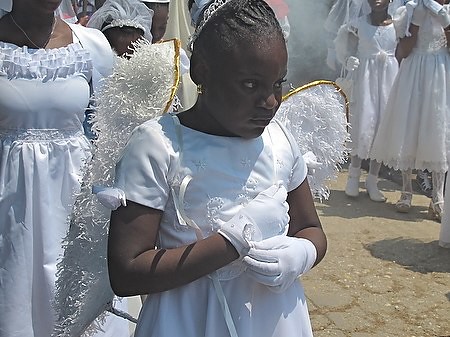
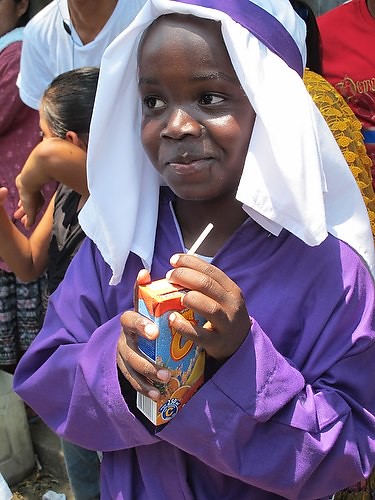
Seeking a high place to shoot the procession, I encountered Polo Martinez, a Garifuna elder and musician with Rasta-style dreadlocks whom I had met before.
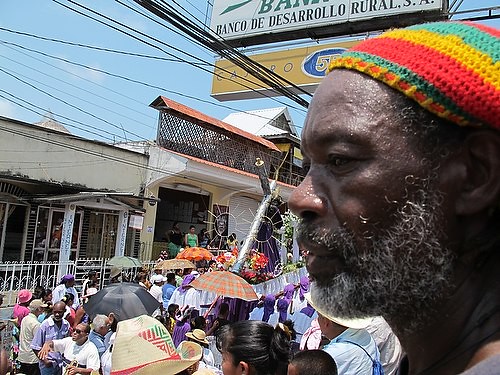
“I’m reflecting on the power of belief,” he mused, watching the spectacle. “They plant this seed in your mind, and it grows… all of these people, gathered for their beliefs. Very clever, the way they’ve allowed the pagan symbols to continue.”
“How so?” I asked, intrigued.
“Look at the spears,” he said, chuckling. “Wake up, girl!”
I looked out over the crowd – strong black men robed in purple, bearing aloft a white Jesus carrying the cross, surrounded by a crowd of robed “Roman soldiers” carrying spears. Suddenly I realized the form was the same as those of the Masai warriors I had met in Tanzania, and I was transported to a faraway continent to a ritual of an entirely different sort.
“Belief,” Polo mused. “It’s a powerful, powerful thing.”
He fell silent. It seemed he wanted to say more, but the crowd surged and he was gone.
At midday Jesus appeared again to be beaten and tortured, and the pageantry concluded in the churchyard, where hundreds gathered to witness his crucifixion.
The event was captured live for the cable TV station, and Garifuna men visiting from the States documented the event with their videocameras to take home and share with the family. Others stepped forward to shoot the spectacle with their cell phone cameras. Finally the Roman soldiers demanded restored the order, and the black Jesus was left to the ravages of the blazing tropical sun.
Created with Admarket’s flickrSLiDR.
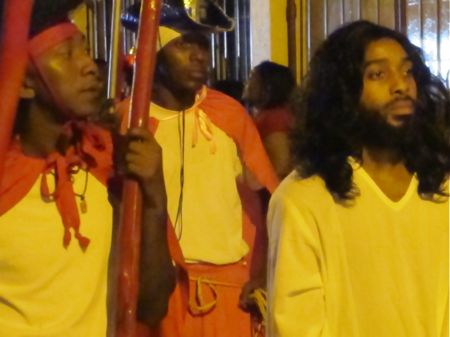
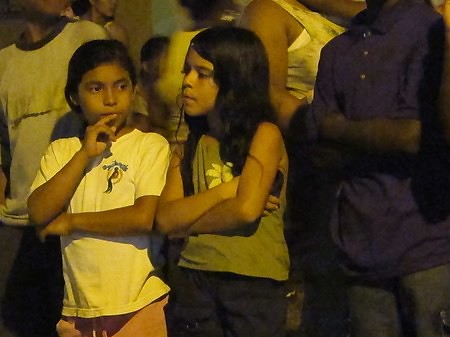
Leave a Reply